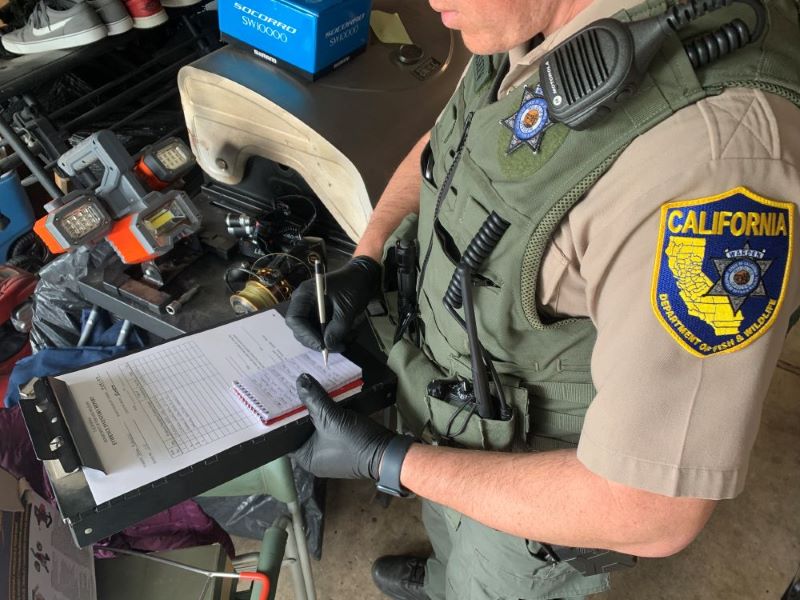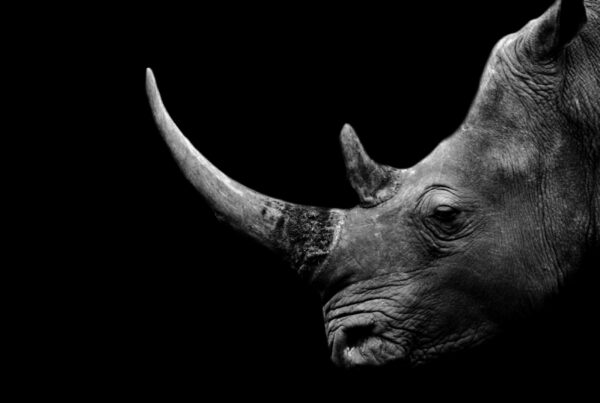
Sacramento authorities recently announced how the California Department of Fish and Wildlife arrested eight individuals suspected of white sturgeon poaching from Sacramento Valley waterways. The almost year-long investigation first began in May 2021 when wildlife authorities first suspected two Oakland residents — Andrew Chao and Ay Pou Saechao — of catching sturgeons, removing their eggs, and selling these to a black market family operation in San Francisco that processed the egg roe into caviar for the illegal market.
On March 14, officers found a live 85.5-inch sturgeon inside Chao’s vehicle during a traffic stop. The fish was safely returned to the water. Chao was arrested for conspiring to poach sturgeon and the possession of an oversized sturgeon. During the investigation, officers found connections between the two suspects and another investigation involving multiple sturgeon poaching suspects. According to CDFW officers, the suspects face charges regarding poaching but also unlawful possession of sturgeon, sturgeon tagging violations, unlawful sale of sturgeon meat and caviar, and unlawful possession of undersized/oversized sturgeon. Officers also discovered illegal narcotics, drugs, and firearms intended for sales. As the California Department of Fish and Wildlife notes, wildlife trafficking is motivated by greed and the desire to increase personal profit. Yet, the impact on the wildlife and the environment can be devastating.
The white sturgeon, a living dinosaur in our waterways
White sturgeons are living dinosaurs. They existed as long as 200 million years ago during the Mesozoic era, which means they were contemporary to iconic creatures such as pterosaurs, triceratops, and the infamous t-rex. White sturgeons survived many extinction crises, including the asteroid impact that killed dinosaurs.
Native to the west coast of North America, white sturgeons are found in freshwater from California to British Columbia. They are anadromous, which means that, like salmon, they start their lives in fresh water and spend some time in seawater. However, the resemblance stops here as sturgeons survive after spawning, unlike salmon. Sturgeons are North America’s largest fish, reaching up to 20 feet long and weighing up to 1,500 pounds or more. They can live over 100 years. Due to their size, rapid growth, and sharp and solid scales, adult sturgeons do not have any significant predators in their natural habitat except for humans.
Are sturgeons protected species?
First of all, it is essential to understand specific fishing laws regarding sturgeons. However, regulations and restrictions will vary depending on the species and its conservation status.
Atlantic sturgeon, which lives in coastal water and rivers from Canada to Florida, is listed as an endangered or threatened species under the Endangered Species Act in the US. It is completely illegal to fish for, catch or keep Atlantic sturgeons.
Green sturgeon, native to the Northern Pacific regions, was listed as threatened in 2006, making it illegal for recreational fishing.
White sturgeon lives in the same regions as its green peer, yet it doesn’t feature on the Endangered Species Act list. Does it mean it is okay to fish white sturgeon? Things are not as simple. White sturgeon is considered “conservation depending”, which means that conservation efforts are in place to prevent it from becoming endangered or extinct. Consequently, fishing activities regarding white sturgeon must meet the conservation program requirements.
Fishing vs. poaching white sturgeon in California: A clear distinction
Despite white sturgeons being conservation depending, they can still be fished under California’s Fish and Game Code:
- Fish between 40-inch and 60-inch fork length may be taken. You must release fish under or above this size range.
- Only one white sturgeon can be fished per day and no more than three sturgeons per year throughout the state.
- No fish greater than a 68-inch fork length can be removed from the water, even for non-fishing purposes.
- You must have a nontransferable Sturgeon Fishing Report Card issued by the department for reporting and tagging requirements regarding white sturgeon fishing.
- Fishing season is open all year but consult your specific fishing site for special regulations and restrictions.
- A specific method of capture, involving one single point, single shank, barbless hook on a line. No other fishing method will be tolerated.
Poaching is the illegal capture of wild white sturgeon, affecting the conservation of the species. Poachers violate one or more regulations regarding sturgeon fishing in California. This can refer to:
- Undersize or oversize sturgeon possession
- Failure to report and tag sturgeon
- Fishing without a license
- Fishing in areas where activities are restricted or prohibited
- Utilizing other methods of capture for white sturgeon, such as prohibited use of decoys or weaponry
- Not respecting daily and annual bag limits of one a day and three per year
The impact of sturgeon poaching on the environment
Human poachers have extensively contributed to endangering the survival of the Atlantic and green sturgeons in the US through extensive fishing techniques to extract sturgeon eggs and meat. According to the International Wildlife Defense Foundation, poaching is the second largest direct threat to animal species. Habitat destruction is the first threat. Indeed, white sturgeon populations are already at high risk due to historic drought conditions affecting their natural habitat in California. The combination of climate change and human-made structures, such as the dams ringing the Central Sacramento Valley, have reduced sturgeon spawning location to a short stretch along the Sacramento River.
Extinction is the greatest threat for white sturgeons if poaching carries on. But if the sturgeon population decreases to the brink of extinction due to poaching, other fish populations could soar once their main predator disappears. This could put the river ecosystem at risk, putting native plants and bugs at risk of being eaten to extinction too. A popular example of how poaching affects the ecosystem is the correlation between the gray wolves, the elks, and the aspen tree in Yellowstone National Park. Indeed, when grey wolves were excessively poached and endangered, the elk population multiplied rapidly and almost ate the aspen tree to extinction. Without the alpen tree, many other species would have seen their existence threatened, including the elks but also numerous birds and insects. The bottom line: Poachers destroy the fragile balance in our ecosystems. The same thing could happen to the white sturgeon and native river species and plants.
Understanding the motivation and risks behind poaching can help enthusiastic fishers and anglers identify and report illegal activities in their local area. More importantly, protecting the conservation of species such as the white sturgeon is a community effort, so the white sturgeon population that has survived many extinction crises can also survive human threats.
Protecting our land is everyone’s responsibility. If you or someone you know has any information about potential poaching activity, please call CalTIP at 888-334-2258 or text 847411 to report illegal activity. This toll-free telephone number operates 24 hours/day, 7 days/week, and you do not have to provide your name. For more information, please visit Californias Turn in Poachers and Polluters page. Thank you for helping us protect our wildlife and resources!





